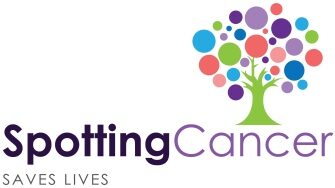According to the American Cancer Society, people diagnosed with localized (early-stage) colorectal cancer have a 5-year survival rate of 91%, compared to just 14% when the disease has spread to distant organs. Similar survival gaps exist across other types of cancer, from breast to lung to prostate. (Source: cancer.org)
So why do so many people delay screenings?
Often, it’s perceived cost—financial, emotional, or even time-related. But what’s rarely considered is how not getting screened early can be far more expensive in every way including one’s life.
The True Financial Cost of Late-Stage Cancer
Cancer is one of the most expensive diseases to treat, and the cost rises sharply when it’s not caught early.
- A 2023 study published in JAMA Oncology found that Medicare patients diagnosed with Stage IV colorectal cancer incurred costs averaging $108,599 in the first year of treatment.
(Source: JAMA Oncology) - Chemotherapy, radiation, and hospitalization for advanced cancer can result in out-of-pocket costs ranging from $10,000 to $50,000 per year, depending on insurance coverage and treatment type.
(Source: National Cancer Institute) - A colonoscopy costs an average of $1,250–$3,700, but by federal law many insurance plans, including Medicare, cover the full cost of the screening.
(Source: Healthcare Bluebook)
These numbers don’t account for indirect costs, such as:
- Lost wages or even loss of employment due to long treatment cycles
- Travel costs to specialized cancer centers
- Emotional strain on families and caregivers
- Reduced quality of life and long-term side effects
Early Screening: A Small Investment That Saves Lives—and Money
Most Screenings Are Covered—Your Time May Be the Only Cost
Thanks to the Affordable Care Act, most recommended cancer screenings—like colonoscopies, mammograms, Pap smears, skin checks, and PSA blood tests—are fully covered by insurance for people in qualifying age groups or risk categories. That means for many individuals, the only investment is time—not money.
Take colorectal cancer as an example: when caught early, many precancerous polyps can be removed during the same colonoscopy, stopping cancer before it starts and preventing the need for intensive treatment. Thus avoiding time away from loved ones, work or while undergoing difficult therapies.
The same principle applies to other types of cancer. Early detection through routine screenings leads to timely treatment, fewer invasive treatments, and lower long-term impacts—both emotionally and financially. And with insurance covering most of these preventive services, there’s little reason to delay.
The return on investing a few hours to get screened can have the greatest return of all—it may reduce the impact on your future life.
The Cost of Time: What Cancer Takes from You
Even more than the financial toll, late-stage cancer often robs patients of something even harder to recover: your life & time.
Advanced treatments may involve:
- Multiple rounds of chemotherapy or radiation
- Weeks or months away from work or family
- Ongoing recovery from surgeries or side effects
- Permanent lifestyle changes or disabilities
Early-stage treatments, on the other hand, are typically less invasive, shorter in duration, and easier to recover from, allowing patients frequently to return to daily life faster and with fewer disruptions.
The Emotional Toll of Waiting
The emotional cost of a late-stage diagnosis is devastating—not only for patients, but for families as well. Regret, fear, uncertainty, and guilt are common themes among those who postponed care.
Conversely, people who take preventive action often report feeling empowered, relieved, and in control of their health.
So, What’s the Real Price of Waiting?
If you’ve been putting off a cancer screening because you’re busy, anxious, or concerned about cost—consider this:
- The average colonoscopy costs $1,250–$3,700
- An annual mammogram costs less than
- a car payment.
- A Pap test could cost less than a dinner out—and save your life.
Meanwhile, late-stage cancer can cost hundreds of thousands of dollars, months or years of lost time, and—most importantly—your chance at survival.
The Bottom Line
Schedule your screenings. Know your signs and symptoms. Pay attention to your body.
Early detection saves lives, protects families, and keeps healthcare costs manageable. Don’t wait for symptoms to get loud. Take action now—because your health is worth it.
Cancer doesn’t wait. And the price of waiting—financially, emotionally, and physically—is simply too high.

